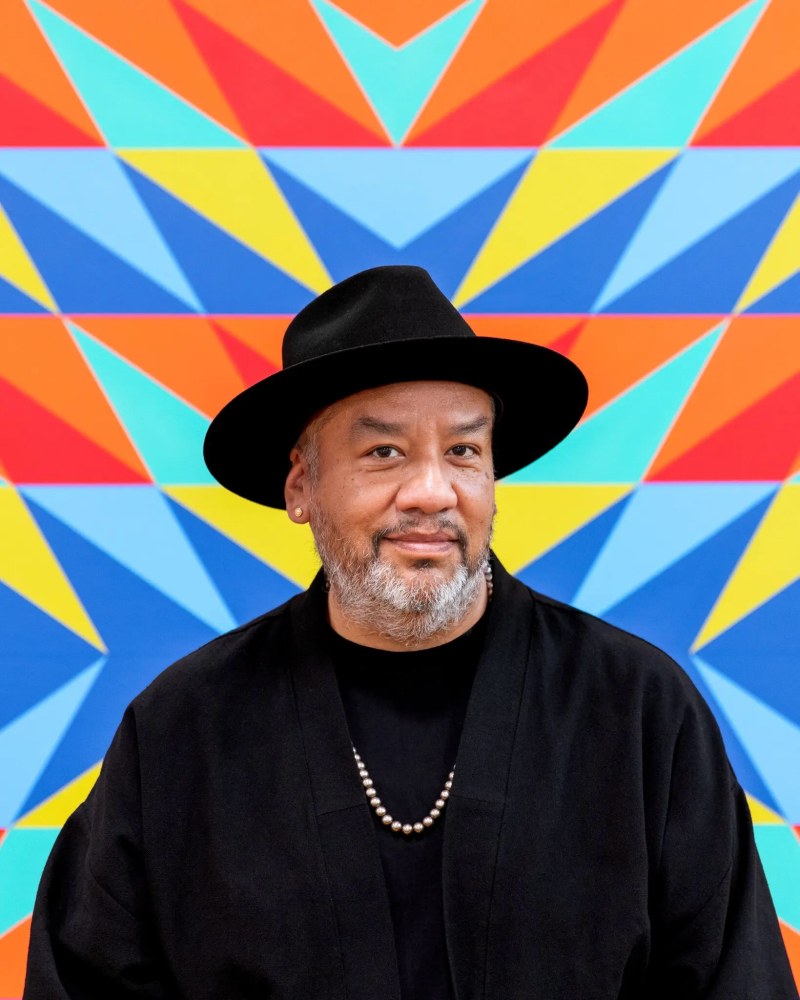

By Zachary Small
Last summer, Jeffrey Gibson received an honor that most artists wait for their entire lives. Would he represent the United States at the Venice Biennale, the art world’s version of the Olympics? Only a few weeks after accepting, there was another auspicious ring on the telephone.
It was the curator David Breslin, wondering if Gibson would become the sixth artist to alter the Metropolitan Museum of Art’s facade with newly commissioned sculptures.
“He called me from the beach,” recalled Gibson, a Choctaw-Cherokee artist known for infusing abstract works with queer and native themes.
For the commission, Gibson will return to the ancestral spirit figures he started assembling in 2015. The challenge will be translating these delicate structures of beadwork, textiles and paint into four weatherproof sculptures that will gaze upon museum visitors from their plinths above Fifth Avenue. They will be on view from September 2025 through May 2026.
Breslin, who leads the Met’s Modern and Contemporary Art department, described Gibson as “one of the most incredible artists of his generation.”
The curator also said Jennie C. Jones would be the final roof garden commission before the terrace undergoes renovation as part of the museum’s construction of the Tang Wing, a $500 million complex that currently includes plans for 80,000 square feet of galleries reaching five stories into the sky.
For the roof garden, which will be on view from April 15, 2025, to Oct. 19, 2025, Jones will experiment with stringed instruments, the latest example of her career exploring the relationship between acoustic sound, minimalist art and the history of the Black avant-garde. This will be her first major showcase since a 2022 exhibition at the Guggenheim Museum, where she displayed canvases with red and yellow streaks meant to evoke the acoustic reverberations inside the building’s spiral architecture.
Although it was not originally planned for the artists to showcase their commissions at the same time, Breslin saw the threads of a strong curatorial program coming together. “They do so much with abstraction, and there is a sonic quality to both,” he said. “Neither is afraid of beauty and both think we need to deal with issues of identity, place and consciousness.”
Gibson said schedules had aligned so he could finish work on the Venice Biennale and the Met commission. Artworks for the Italian exhibition were shipped this month, though he remains focused on developing programming around the show. But the studio has already shifted toward making sculptures for the museum facade.
“Part of the challenge,” Gibson said, “is working with engineers to find materials that allow me to keep the tactile quality of my work while making something that can be outdoors.”
The high-profile opportunities for Gibson have come during a time of mourning. In January, his gallerist, Brent Sikkema, was murdered in Rio de Janeiro. Brazilian authorities are still investigating the circumstances around his death; this month, they called for the arrest of the dealer’s husband, Daniel Sikkema, whose lawyers said he was innocent.
“He shared everything with me, from his relationship of being a parent to living in New York City,” Gibson said. “He always cared.”
Photo: Brian Barlow